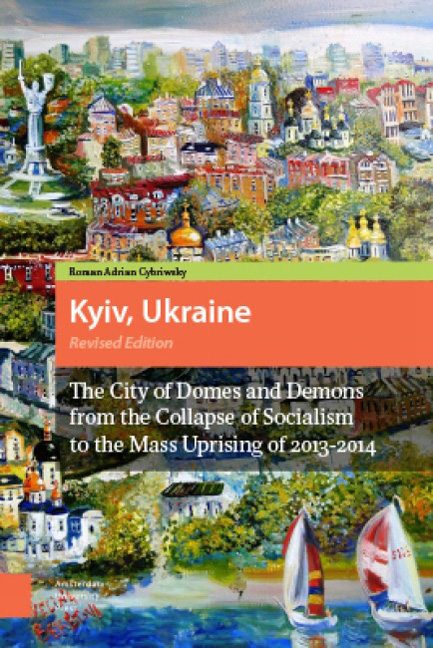 Kyiv, Ukraine
Kyiv, Ukraine Book contents
- Frontmatter
- Dedication
- Contents
- List of Illustrations and Tables
- A Note about Transliteration
- Preface and Acknowledgements
- 1 Far from Heaven
- 2 The Missing Museum of the History of the City of Kyiv
- 3 Sketches from the Capital
- 4 Soviet Ways, Post-Soviet Days
- 5 Historical Memory
- 6 The Center of Kyiv
- 7 A Geography of Privilege and Pretension
- 8 Landscapes of Struggle
- 9 “Suburbia”
- 10 Seamy Stories
- 11 The Defenders of Kyiv
- 12 Reflections
- Postscript
- References
- References
4 - Soviet Ways, Post-Soviet Days
Published online by Cambridge University Press: 10 December 2020
- Frontmatter
- Dedication
- Contents
- List of Illustrations and Tables
- A Note about Transliteration
- Preface and Acknowledgements
- 1 Far from Heaven
- 2 The Missing Museum of the History of the City of Kyiv
- 3 Sketches from the Capital
- 4 Soviet Ways, Post-Soviet Days
- 5 Historical Memory
- 6 The Center of Kyiv
- 7 A Geography of Privilege and Pretension
- 8 Landscapes of Struggle
- 9 “Suburbia”
- 10 Seamy Stories
- 11 The Defenders of Kyiv
- 12 Reflections
- Postscript
- References
- References
Summary
Looking after Lenin
During Soviet times, there was a likeness of Vladimir Ilyich Lenin (1870- 1924), Russian revolutionary and founder of the Russian Communist Party and the USSR, in the center of virtually every city and town from the border with Poland and other East Europe satellite states in the west to the Pacific reaches of Siberia in the east. Many communities had multiple Lenins, as statues of him were also erected in front of schools, libraries, and other public buildings, and at factories, rail stations, and virtually everywhere else where there were Soviet citizens to pay homage. Vladimir Ilyich was a ubiquitous icon as well on Soviet political posters and banners, lapel medals and other awards to Soviet heroes, and on postage stamps and currency of various denominations. For a time, the leader's presence was rivaled by that of Joseph Stalin (1878-1953), but de-Stalinization after the dictator's death returned Lenin to sole position at the top of Soviet iconography until the Soviet Union itself crashed in 1991. That ushered in a time of choice for citizens of the vast territory, with the result that a great many statues of Lenin were opportunistically toppled or dismantled, often to great cheers from crowds in anticipation of better days. The first such event in Ukraine apparently took place in L’viv on September 14, 1990. After that, Lenin removals spread or were repeated almost instantly in many other areas of Ukraine and in other collapsing Soviet republics, and they have continued sporadically ever since in the post-USSR era, sometimes via dead-of-night vandalism (Wanner, 1998, pp. 172-199).
In Kyiv, we have a story of Lenins removed, Lenins that never were, and one prominent Lenin who still stands. Its history with the statues is, therefore, probably somewhat typical of the former USSR, although as a bigger urban place and strategically important because of military research and industrial production, there were probably more Lenin statues in the city than in most other Soviet cities. With respect to removal of Lenins after the end of the Soviet Union, Kyiv is probably somewhat in the middle for Ukraine. In the west of the country, Lenin statues were taken down with glee as soon as it was possible to do so, starting with the toppling of the statue in front of the Opera Theater in L’viv. Instead, monuments to icons of Ukrainian nationalism were erected in these cities.
- Type
- Chapter
- Information
- Kyiv, UkraineThe City of Domes and Demons from the Collapse of Socialism to the Mass Uprising of 2013–2014, pp. 101 - 128Publisher: Amsterdam University PressPrint publication year: 2014
